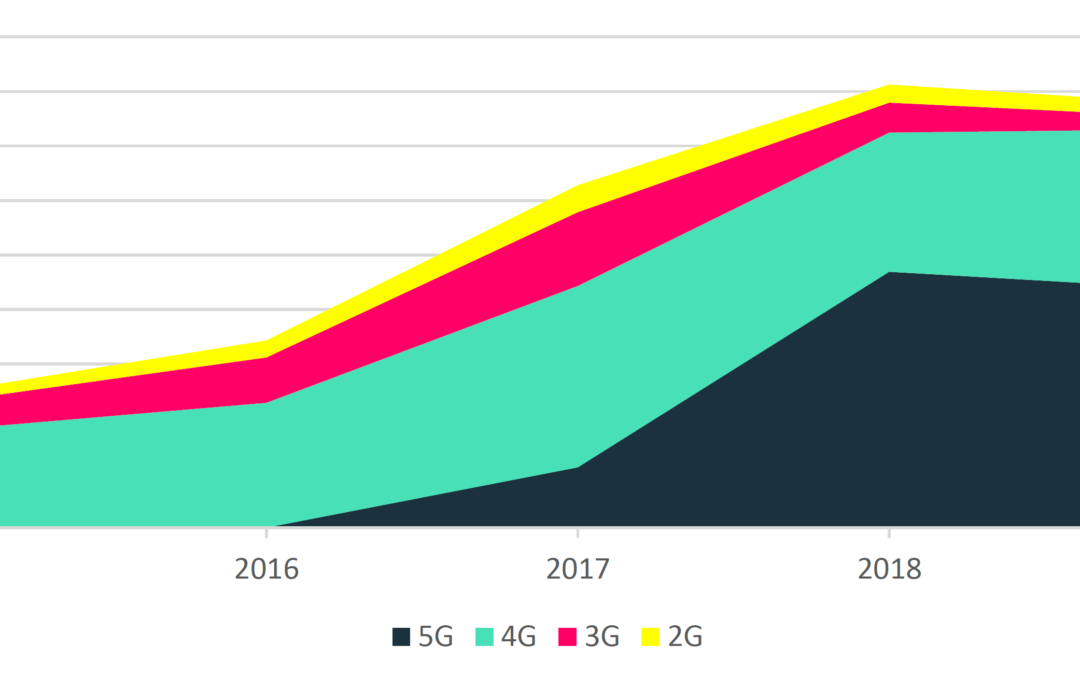Telecommunications experts agree that 5G is arriving fast and that the patent race is heating up. In this article, we examine the trends and leaders of this race. Today we are mainly using 4G, or LTE, but it’s quickly being superseded by the next-generation wireless technology. 5G is offering unmatched speeds, lower latency, and a more stable connection.
Who Is Leading The 5G Evolution?
In one study, telecommunications experts found that 120 million patent documents have currently been submitted worldwide, mainly from the USA, Japan, China, Europe, and Korea. Among the 120 million, however, only 300,000 were found to be associated with a full SEP declaration, coupled with licensing commitments. While these are not all related to 5G, we can see a significant increase in the number of patents for this recent technology over the past three years.
| Declaring company name | Declared 5G patent families | Filed in at least one office (USPTO, EPO or PCT) | Granted in at least one office |
| Huawei Technologies (CN) | 3,325 | 2,379 | 1,337 |
| Samsung Electronics (KR) | 2,846 | 2,542 | 1,746 |
| LG Electronics (KR) | 2,463 | 2,296 | 1,548 |
| Nokia (incl. Alcatel-Lucent) (FI) | 2,308 | 2,098 | 1,683 |
| ZTE Corporation (CN) | 2,204 | 1,654 | 596 |
| Ericsson (SE) | 1,423 | 1,295 | 765 |
| QUALCOMM (US) | 1,330 | 1,121 | 866 |
| Intel Corporation (US) | 934 | 885 | 171 |
| Sharp Corporation (JP) | 808 | 677 | 444 |
| NTT Docomo (JP) | 754 | 646 | 351 |
Current 5G Geographical Coverage
5G uses an ultra-wideband frequency to deliver faster and more reliable internet. The technology is also expanding quickly with about 55 cities throughout the United States already covered as of mid-2021. This number is expected to grow to 60 cities soon. The technology is getting wide adoption in Europe. 5G Observatory reports that 24 European countries already have commercial 5G service, and only a few countries remain that still need to launch their 5G services. These include Portugal, Malta, and Lithuania.
Where is 5G headed?
While data regarding the number of patents submitted by international companies are relatively easy to come by, many of these organizations have yet to reveal how they will be utilizing the technology. Currently, we do know that 5G will be used for more than just mobile internet. Verizon, for example, has used 5G as a way to provide customers with a residential broadband option – which can be very useful in areas where internet access options are limited.
It is well established that technological convergence is increasing, particularly due to the use of the internet and related technologies in modern-day electronics. Even areas that do not seem to have a significant role to play right now will likely become more reliant on wireless connectivity options in the future.
Internet connectivity already plays a crucial role in several sectors. There are medical devices that require a consistent connection to provide physicians frequent updates on patient data. Factories are turning to smart solutions that automate several tasks – but these often also rely on internet connectivity to ensure the efficiency of the machinery and software used. Current mobile internet connectivity solutions have limitations – particularly in terms of frequencies used, which may interfere with other wireless communication devices in the area. Additionally, limitations in reliability and speed also remain an issue. 5G is a technology that could potentially solve the current problems – thus paving a positive future for the technology.
Conclusion
5G offers faster mobile internet speeds than ever before, but implementation is not yet at a global point. Millions of patent documents for 5G-related technologies have been submitted by telecommunications experts, but the market remains dominated by certain technology organizations. With a well-defined future in place for 5G technology, IP professionals need to ensure they have a thorough understanding of patents, standards, and related factors that are associated with the connectivity option.
The current increase 5G patents would result in royalties payable to the patent owners. The initial struggle here was related to the smartphone industry, but now it also affects other sectors – such as the manufacturing and automotive industries. A thorough overview of current patents, as well as requirements for filing new patent submissions, can help IP professionals avoid conflict and claim part of the market. Sidespin Group’s telecommunications experts have assisted corporations with wireless patent portfolio evaluation and monetization.
References
https://personal.iroam.com/blog/history-cellphone-network.aspx
https://www.iplytics.com/wp-content/uploads/2019/01/Who-Leads-the-5G-Patent-Race_2019.pdf
https://www.verizon.com/about/our-company/5g/what-5g
https://5gobservatory.eu/market-developments/5g-services/

